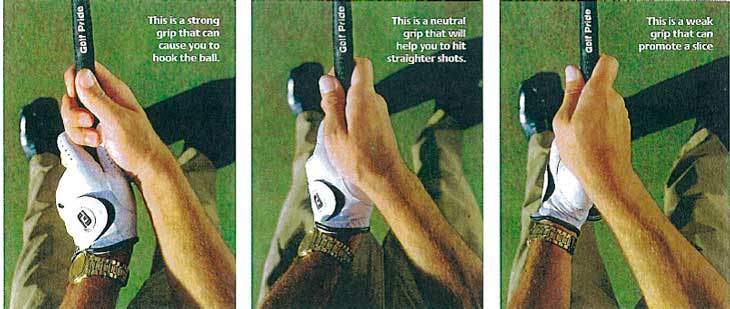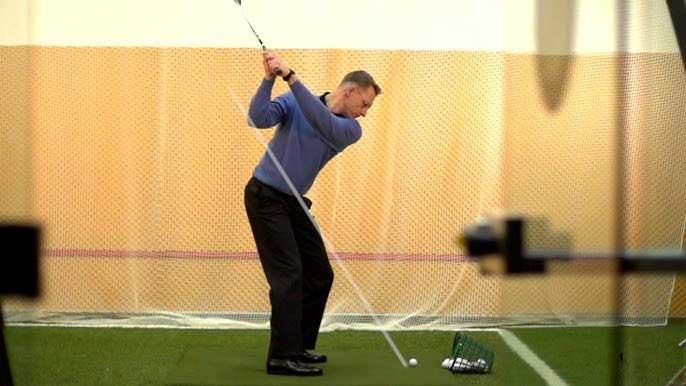When it comes to golf, which is a sport known for its meticulous precision, every aspect of your game counts, and that includes how you grip the golf club.
Actually, your grip can be the secret weapon or the silent saboteur of your swing. And you need to remember this! This is why in this article, we are going to bring you a comprehensive guide on the three main mistakes to avoid when gripping the golf club.
The High Palm vs. Interlocking Too Tight

The first critical mistake we should explore is what we call "The High Palm." Basically, it means that the golf club is positioned too high in the lead hand, running through the palm.
This might seem like a minor detail, but it can have a colossal impact on your game. You might ask, why? Because it severely limits your wrist's ability to move efficiently.
Imagine trying to paint a masterpiece with a brush that's glued to your hand. Actually, that's what a high palm grip feels like. The thing is, our wrists can't perform their graceful dance which is essential for generating power and a precise strike.
Instead, envision a grip that nestles comfortably in the hand, running diagonally underneath the heel pad through the base of the forefinger.
From here, your wrists gain newfound freedom to move. It's akin to an artist wielding a brush with finesse, crafting strokes with precision.
On the flip side, there's the issue of "Interlocking Too Tight". This is quite a common mistake. Many golfers believe that interlocking their fingers is the holy grail of grips, just because legends like Tiger Woods and Jack Nicklaus have used it.
However, as our second point articulates, gripping too tightly can spell trouble. When you interlock too tightly, your little finger and forefinger often intertwine too deeply, causing your palms to face outward.
This positions the club too far into the palm of both hands, setting the stage for issues with your wrists and club face. The solution?
Start with your palms facing each other, adopting a "baseball/10-fingered grip." This neutral position ensures that your grip doesn't become a straitjacket for your swing.
Dominant Hand Too Strong vs. Weak Trail Hand

Now, let's delve into the "Dominant Hand Too Strong" versus "Weak Trail Hand." The former is a widespread misconception among golfers.
Many believe that if they tuck their right hand firmly beneath the club, it will ward off that dreaded slice. While this might offer temporary relief, it fosters poor swing habits as it compensates for a flawed grip.
Imagine a sculptor trying to chisel a masterpiece with a hammer that's too heavy; it leads to overcompensation and imprecise work. Similarly, a dominant hand that's too strong creates a slew of issues in your swing.
On the other hand, the "Weak Trail Hand" grip, where your hand is too far to the left (for right-handed golfers), wreaks havoc on your club face during the swing.
This grip tends to force the club face open, resulting in a loss of power and consistency. Imagine trying to write a delicate poem with a pen that constantly leaks ink; it's a messy endeavor.
To combat this, place your trail hand on the side of the golf club, pointing the "V" between your thumb and forefinger more toward your right shoulder.
This stance begets a "stronger" club face position and paves the way for a consistent downswing and impactful impact.
The Importance of Using a Grip Trainer

Our journey into the intricacies of the golf grip would be incomplete without mentioning the value of using a grip trainer. While the grip trainer won't provide the elusive perfect grip (which varies from golfer to golfer), it offers significant assistance to the average player.
Consider it a sculptor's guiding tool, helping you mold your grip into a more neutral position. A neutral grip is akin to a painter's canvas—a clean slate that doesn't predispose you to compensation in your golf swing.
The grip trainer serves as a sculptor's steady hand, making sure you chisel your grip just right. However, it's essential to note that some golfers may prefer a slightly strong or weak grip, and in such cases, the grip trainer might not be a panacea.
But for most golfers, it's a wise choice to train your grip to be as neutral as possible, minimizing swing inconsistencies.
To sum up
In conclusion, we would like to note that golf, like any art form, demands a deep understanding of its fundamentals. Gripping the golf club is akin to wielding the artist's brush or sculptor's chisel.
In other words, it's your point of contact, the linchpin between your intention and execution. In this exploration of gripping the golf club, we've unearthed the three main mistakes:
- the high palm
- interlocking too tight
- dominant hand too strong
- a weak trail hand
These are the pitfalls that can sabotage your swing, like an artist with the wrong tools or a sculptor with a shaky hand. Ultimately, to master your grip, consider these principles.
Imagine yourself as an artist, perfecting your craft. Seek the freedom of wrist movement, the balance between your hands, and the guidance of a grip trainer.
As you refine your grip, you'll unlock the potential for a golf masterpiece every time you step onto the course. Remember, it's not just about the swing; it begins with how you hold the club in your hands!

Enrique Martínez Luque
Enrique Martínez Luque is the Argentina-based golf expert and professional writer. He built his career in the world of golf taking a number of positions. Enrique was the manager of a golf club, director at a federation level, an agent for professional golfers and director institutional relations on the Argentinian Tour. Assissted the professional golfers on major tours for almost 20 years. Worked as the press officer of national and international golf tournaments.
Follow me
